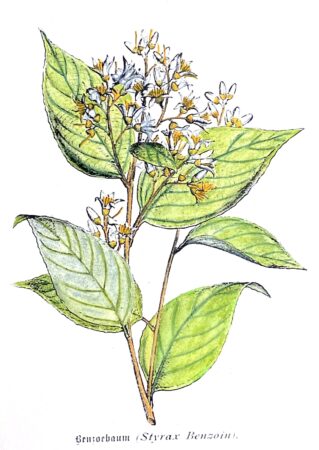
Benzoin botanical hand drawn and colored by Natural Perfumer Mandy Aftel©
Benzoin resin is one of perfumery’s most valuable and versatile natural materials, playing a crucial role in contemporary fragrance creation. This aromatic substance, harvested from trees of the genus Styrax, provides perfumers with a complex palette of warm, sweet, and balsamic notes that function as primary olfactive elements and technical enhancers within fragrance compositions.
The resin is extracted from lacerations made into the bark of the tree. The tree “bleeds” a sticky, resinous sap, which is allowed to harden. The crystallized resin is scraped from the tree’s bark and dried in the sun. It can be used as incense in this solid resin form for fumigation on hot coals, much like Frankincense and Myrrh, or it can be further processed via solvent extraction or distillation for use in perfumery, aromatherapy, or for medical use.
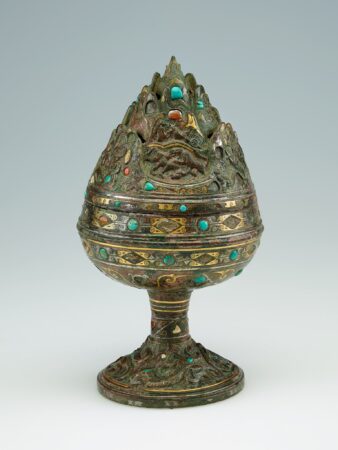
Lidded incense burner 2nd century Han Dynasty, Licensed by WikiCommons
Historical records indicate benzoin was used in China as early as the 7th century BCE. In that period, it was known as An-si-xiang, and it was named after the Parthian Empire through which it was traded. Chinese medicinal texts praised benzoin not only for its fragrance but also for its purported therapeutic properties, particularly for respiratory ailments. Benzoin is believed to have magical and spiritual properties across many Eastern and Western cultures. The resin is used in rituals to purify spaces when burned as an incense, shield against negativity, enhance concentration, attract positive energies and prosperity.
Benzoin resin derives its distinctive character from a complex mixture of aromatic compounds. The primary constituents include Benzoic and Cinnamic acids and their esters, Vanillin, various resin alcohols, sumaresinolic and siaresinolic acids, triterpenes, and phenylpropanoid compounds.
These components create benzoin’s multifaceted olfactive profile, which exhibits a dominant sweet, vanilla-like character with warm, balsamic undertones, mild spicy and powdery aspects, and hints of cinnamon in certain varieties. Benzoin’s complexity derives from these primary notes and their harmonious interplay, creating an aroma that evolves on the skin and interacts dynamically with other fragrance ingredients.
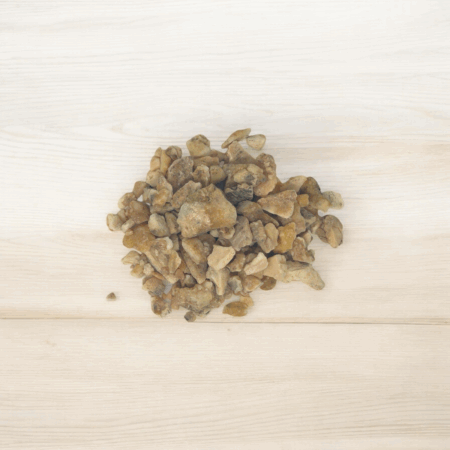
Siam Benzoin Resin via Darren Alan
Perfumers distinguish between two primary varieties of benzoin, each with distinctive characteristics that make them suited to different applications. Siam Benzoin is traditionally sourced from Styrax tonkinensis trees in Laos, Vietnam, and Thailand. It contains a higher vanillin content, displays a smoother odor profile, and has a pronounced sweetness. Siam Benzoin is perfect for gourmand compositions and is of superior quality.
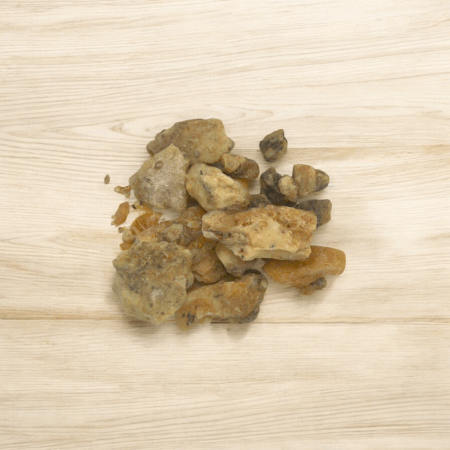
Sumatra Benzoin Resin compliments of Darren Alan
Sumatra Benzoin is harvested from Styrax benzoin trees, which are primarily found in Indonesia. It offers pronounced resinous qualities, stronger cinnamic notes, and a slightly sharper profile.
Beyond its direct olfactive contribution, benzoin serves several critical technical functions in fragrance composition. Benzoin remains one of perfumery’s most effective natural fixatives, significantly extending the longevity of volatile components like citrus oils and floral notes. Its molecular structure allows it to create a matrix that binds with these materials, slowing their evaporation and improving overall performance. Evaporation rate studies and headspace analysis have scientifically documented this fixative capability.
Perfumers value benzoin for its ability to harmonize disparate elements within complex formulations. It is an olfactive “bridge,” smoothing transitions between fragrance phases and reducing perceptible rough edges between contrasting materials. This property is particularly valuable in modern compositions that combine synthetic and natural materials.
The 19th century saw the emergence of the modern perfume industry in France, with houses like Guerlain, Houbigant, and Lubin incorporating benzoin into their signature compositions. The famous “Guerlinade” base, developed by Jacques Guerlain in 1921, featured benzoin as a key component, exemplifying its importance in creating the foundation of many classic French perfumes.
Benzoin is essential in constructing the classic amber accord, typically combined with labdanum and vanilla. Perfumes utilizing these amber constructions first appeared in the 19th century, with benzoin providing the crucial sweet warmth that defined the genre of that era.
The development of synthetic vanillin in 1874 presented the first significant alternative to benzoin’s vanilla-like aspects, though many perfumers continued to prefer the complex, multifaceted character of natural benzoin. This tension between natural and synthetic materials would become a defining feature of modern perfumery.

Shalimar via wiki media
The early 20th century witnessed benzoin’s incorporation into what was is now referred to as the Amber category, exemplified by Guerlain’s “Shalimar” (1925) and Coty’s “Emeraude” (1921). These compositions leveraged benzoin’s warm, vanilla-like qualities to create sensual, exotic impressions that captivated the Western nose.
The natural vanillic aspects of benzoin make it invaluable in gourmand compositions. These compositions provide sophisticated sweetness without the linear quality of synthetic vanillin. Perfumers often layer multiple benzoin fractions to create complex gourmand signatures that evolve in complexity on the skin.
Benzoin adds warmth, depth, and sensuality in men’s perfumery while maintaining a sophisticated profile that appeals to contemporary consumers. Its presence in fougère and woody-aromatic compositions can help to ground volatile top notes and extend performance while providing a balsamic sweetness without leaning feminine or gourmand.
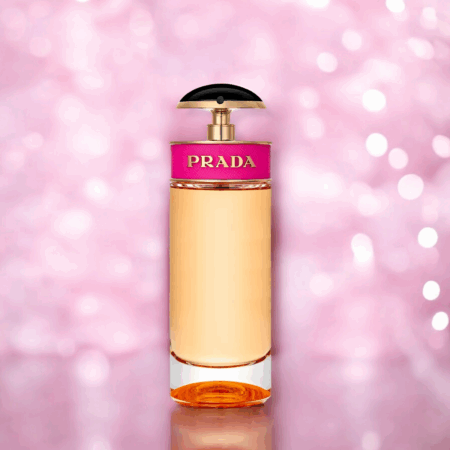
Prada Candy collage by Darren Alan
Contemporary perfumery has embraced benzoin as a showcase ingredient, with houses like Diptyque and Prada creating compositions highlighting its complex character. Master perfumer Daniela Andrier of Givaudan (who received a 2025 Fragrance Foundation Lifetime Achievement award) revolutionized the use of this ancient resin in modern commercial perfumery by incorporating a whopping 12% dose of benzoin in her formula for Prada Candy. The result is a redolent, sultry drydown that offers caramel and balsamic tones without presenting as cloying or overly sweet—sheer poetry for the nose.
Benzoin’s remarkable journey through perfumery history demonstrates the enduring relationship between natural materials and human aesthetic expression. From ancient religious ceremonies to contemporary luxury perfumes, benzoin has maintained relevance by adapting to changing technical capabilities, cultural preferences, and creative visions.
As the perfume industry addresses sustainability challenges and navigates between natural and synthetic materials, benzoin is a model of adaptability and enduring beauty. Its complex chemistry, rich cultural associations, and versatile olfactive profile ensure that this ancient aromatic substance will continue to inspire perfumers and delight perfume enthusiasts for generations to come.
We’ll give the last word to award-winning natural perfumer Mandy Aftel of Aftelier Perfumes: “I often have to restrain myself from using benzoin since it is such good friend to other essences – supporting them with a quiet grace. Benzoin’s soft and flat vanilla aroma is due to the presence of the aroma molecule vanillin. This sweet warm note evolves into a balsamic powdery finish.”
–Darren Alan, Contributor and Perfumer for Darren Alan Perfumes
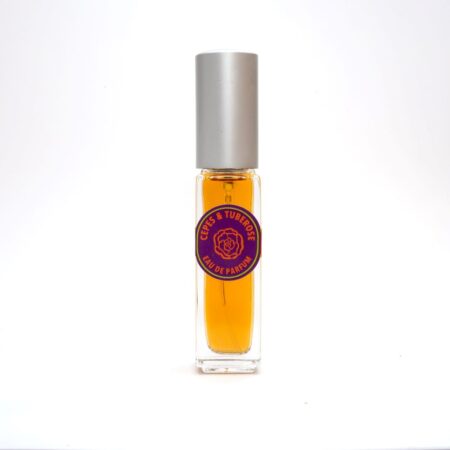
Thanks to the generosity of Mandy Aftel, we have a mini of Aftelier Perfumes Cepes and Tuberose (Benzoin is dosed at 17% in Cepes and Tuberose). The giveaway is for registered readers only, so be sure to register if you have not done so. To be eligible please let us know what sparked your interest about Darren Alan’s article on Benzoin in perfumery, what you learned and where you live. Draw close 6/2/25
Notes for Aftelier Perfumes Cepes and Tuberose include bitter orange, rosewood, Italian tuberose, cepes absolute, benzoin and sandalwood.
Please read Ermano’s Modern Masterpiece article for Cepes and Tuberose here
Follow us on Instagram @cafleurebonofficial @darren_alan_perfumes @aftelierperfume
This is our Privacy Policy
We announce the winners only on our site and on our Facebook page, so like CaFleureBon and use our blog feed…or your dream prize will be just spilled perfume.
